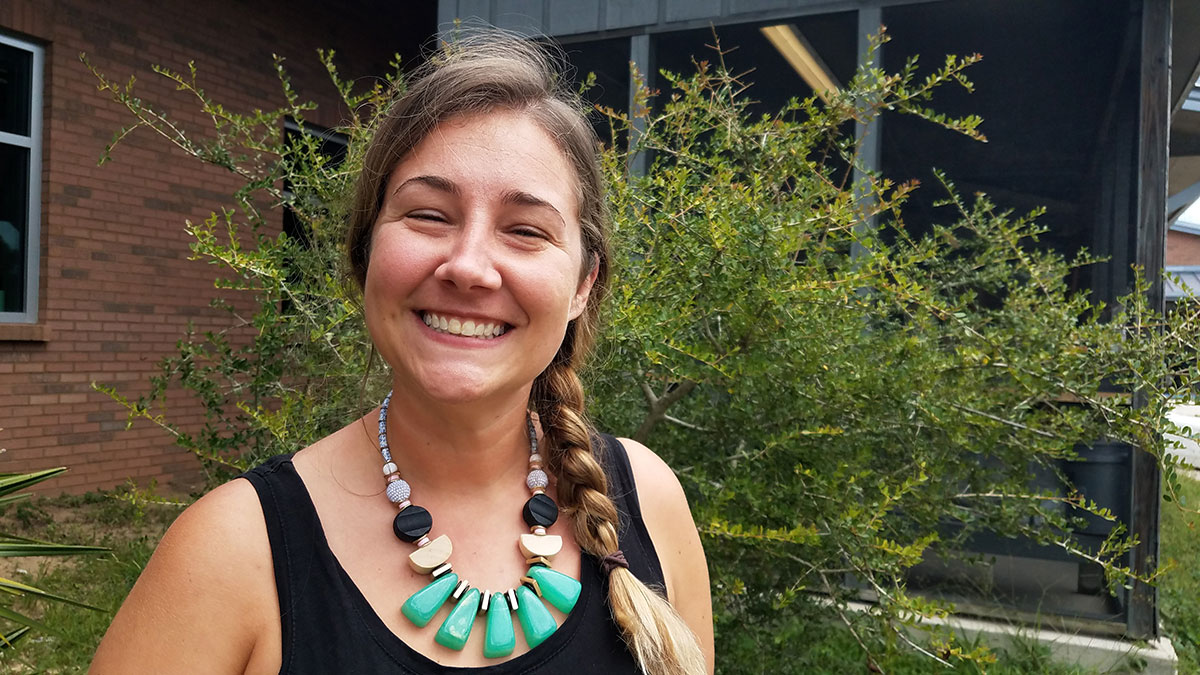
Robyn Zerebecki grew up near a lake in Oakville, Ontario, a suburb of Toronto, Canada known for being the backdrop of Tim Allen’s 1994 hit, ‘The Santa Clause.’ Zerebecki appreciated her family’s summer vacations to the east coast of Canada, and was convinced at a young age she wanted to work on the ocean.
About half an hour from where she grew up, Zerebecki started her studies at the University of the Guelph in marine and freshwater biology. She wasn’t really sure what she wanted to focus on, but throughly enjoyed the limited field and research experience she had participated in.
“I didn’t know a lot about doing research,” Zerebecki said, “but I liked being outside and learning about marine ecosystems.”
After spending some time off in Australia, Zerebecki began her masters in Northeastern University's Three Seas Program. She spent her first nine months taking classes in three different places, gaining research and field experience. The latter half of her masters was spent working on an independent project with Matt Bracken and Cascade Sorte at the University of California Bodega Marine Lab.
Her project focused on the temperature tolerance difference of native and invasive fouling community species such as tunicates and bryozoans.
“Both are filter feeders and can be move around by ships, which means there are often fewer native and more invasive species in these subtidal habitats,” Zerebecki explained. “We looked at and found that these invasive species are more temperature tolerant than native.”
Wrapping up at Northeastern, Zerebecki still wasn’t sure what she wanted to focus on, but did know she wanted to stay in science. In the hunt for job that combined molecular and field work, she connected with Randall Hughes at Florida State University.
“She was working on a project looking into the genetic variation of Spartina and how that influence salt marsh communities, needed a technician, and my experience working at a garden center in college helped me stand out,” Zerebecki said. “She was having a bit of trouble getting her plants to grow, and I had grown plants before.”
Zerebecki spent two and a half years working as a technician in Hughes lab, and finally had a bit of an idea of what she wanted to do.
“I decided to continue working in salt marshes, because the kinds of questions I was interested in, the effects of diversity at different levels, were going to be easier to ask using marsh plants,” Zerebecki explained.
Today, Zerebecki is working to publish her dissertation looking at the interspecific variation of Spartina on salt marsh communities, as she begins a new journey of synthesizing the work of the Alabama Center for Ecological Resilience Consortium (ACER).
The ACER Consortium was created to investigate how biodiversity influences an ecosystem’s resilience, or its ability to resist and recover from disturbance, specifically the ecosystems of the northern Gulf of Mexico to the 2010 Deepwater Horizon oil spill. ACER is one of 12 consortia funded by the Gulf of Mexico Research Initiative.
“I worked with the wetlands group which Randall was a part of, including their large mesocosm experiment here at DISL, and their field surveys in the Chandeleur Islands, examining the interactions between plant species and genetic diversity on coastal communities,” Zerebecki said. Moving forward, she is excited to get more involved in ACER “It’s a great learning experience, not only about the material, but on how to synthesize papers and create a cohesive story from all these different experiments.”